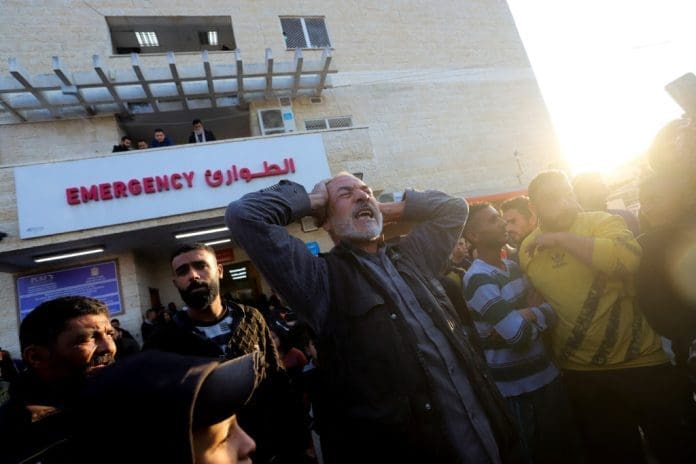The fragile ceasefire in Gaza survived its most severe test Sunday as Israeli military operations resumed following a rapid cycle of attack and retaliation. After Hamas killed two Israeli soldiers, the Israeli military launched a wave of airstrikes across the enclave that local health authorities confirmed killed at least 26 people, including at least one woman and one child. Yet by day’s end, the month-old U.S.-brokered truce remained intact, though tensions remain dangerously elevated.
The violence erupted when clashes in Rafah resulted in casualties among Israeli forces. Prime Minister Benjamin Netanyahu responded by ordering what he described as a forceful military response, directing strikes against Hamas field commanders, tunnel networks, and weapons depots across Gaza. At least one strike hit a former school in Nuseirat that was sheltering displaced residents, compounding civilian casualties amid an already desperate humanitarian situation.
The escalation threatened to unravel an agreement that had already proven fragile. Israel initially halted aid shipments into Gaza, accusing Hamas of violating ceasefire terms. Yet U.S. pressure proved decisive in de-escalation efforts. An Israeli security source confirmed that aid supplies are set to resume Monday, a critical development given the acute humanitarian crisis affecting hundreds of thousands in the enclave.
The timing underscores ongoing U.S. diplomatic engagement. President Donald Trump’s special envoy, Steve Witkoff, and Trump’s son-in-law Jared Kushner are expected to arrive in Israel on Monday, signaling intensive American involvement in stabilising the fragile agreement.
Hamas and Israel remain locked in fundamental disagreements about ceasefire implementation. Hamas’s armed wing stated it remained committed to the truce and claimed ignorance of the Rafah clashes, positioning the violence as an isolated incident rather than systematic ceasefire violation. Yet Israeli Defence Minister Israel Katz announced that the “yellow line” demarcating the Israeli military pullback zone would now be physically marked, with orders that any crossing would be met with fire. That escalation in rules of engagement reflects deep mutual suspicion.
The return of deceased Israeli hostages has become a flashpoint. Israel alleges Hamas is deliberately delaying the handover of remaining deceased captives, while Hamas maintains that special equipment is needed to recover bodies buried under rubble from previous Israeli operations. Hamas has released all 20 living hostages held since October 2023 and handed over 12 of the 28 deceased captives, though the pace of transfer remains a source of intense dispute.
Palestinians braced for continued violence even as the ceasefire technically held. Families in Khan Younis fled their homes following nearby airstrikes, while residents in other areas rushed to markets, uncertain whether supplies would continue flowing. The psychological toll of perpetual uncertainty compounds the humanitarian disaster already reshaping life across Gaza.
The Rafah border crossing, a critical conduit for humanitarian aid, remains largely closed since May 2024. Israel has signalled that reopening depends on Hamas fulfilling ceasefire obligations, creating a circular dependency that leaves millions dependent on a single alternative crossing with insufficient capacity. The United Nations has repeatedly emphasized that current aid flows remain dramatically inadequate to address widespread hunger and humanitarian needs affecting hundreds of thousands across the enclave.
Deeper structural obstacles threaten any durable settlement. Key questions about Hamas disarmament, future governance of Gaza, the composition of an international stabilization force, and any progress toward Palestinian statehood remain unresolved. These fundamental disagreements suggest that even if the current ceasefire holds, the underlying conflicts driving violence remain largely untouched by recent agreements.
Observers tracking the situation note that ceasefires in this conflict historically prove fragile. Each cycle of violence tests the framework further, and each test risks pushing stakeholders toward renewed escalation. Whether intensive American diplomatic pressure can sustain the current arrangement through October remains uncertain, with November bringing potential complications as political dynamics in both Israel and the United States shift with the post-election period.
The ceasefire’s survival Sunday offers no guarantee of permanence. Rather, it suggests that both Israeli military operations and humanitarian concerns are being managed on a day-to-day basis, with the fundamental political questions that generated this conflict remaining fundamentally unresolved.
Source: newsghana.com.gh











